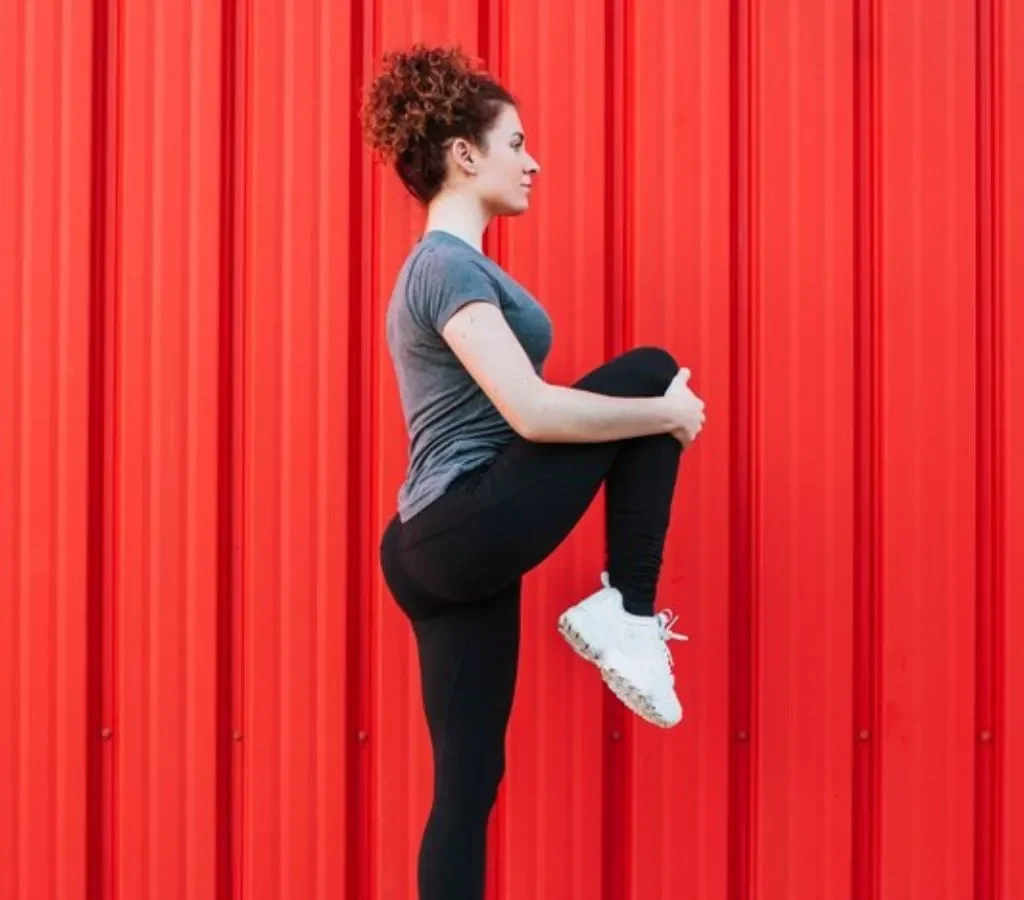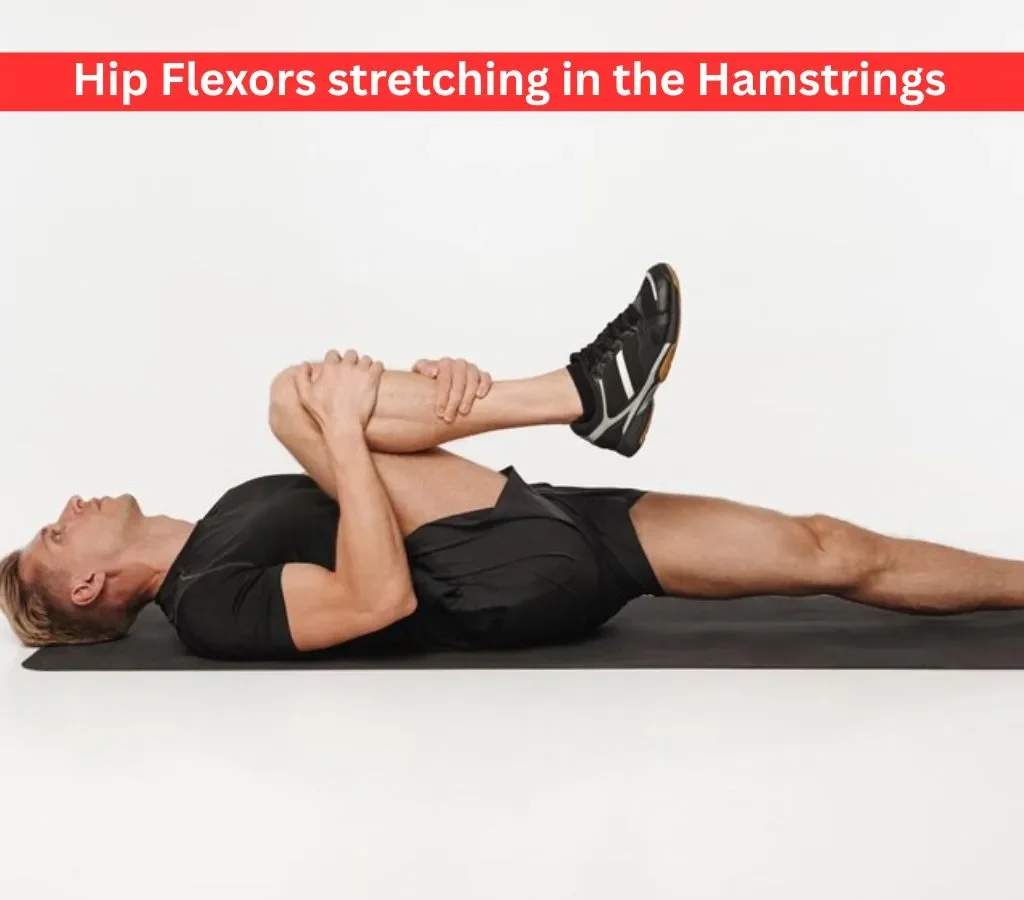Many a time we used to walk around with our legs crossed, and then in a split second we became airborne. However, for the majority of people, this does not remain the case in later years, and this can be attributed to the lack of mobility of the hip joint.
Where we begin to feel it is in various forms: There is one that manifests when one bends to reach parallel while squatting; there is one that one feels when he/she is doing a speed workout; and there is a lower back pain that is not easily located. That is why, as a 2000s pop queen sang, our hips never lie; sharp hip stretches issues become apparent at that age.
The solution? Stretching exercises of the hips you can perform them in the warm-up after the exercise routine or in a formal exercise if that is what you prefer.
You do not have to encounter any of the above issues to practice these hip openings. We believe that everyone should perform hip stretches, particularly before the lower body training or before jogging, soccer, weightlifting or participating in track and field events.
We are aware that most people do not fancy mobility, and tackling this issue creates a lot of concern among employees. Are you entering the phase of getting into rather strange and wondrous poses? It may not even be our favourite pastime, but if one wishes to run faster, squat deeper, kick a ball into the goalpost, let alone perform all these with ease when one is on the other side of the three five maybe even ten years then one has to make time for hip mobilization exercises.
Below is the list of the three recommended exercises for hip mobility. After having experimented and re-experimented with them, it is good to come clean and tell in clear terms that they do indeed work. We will determine the types of exercises, how to perform them, and when to perform them as well. Perhaps you are not in that frame of mind now, but by the time you are through with this article, you will have developed a craving to go start one…then what are you waiting for?
- In this article, you’ll find:
- What is the hip joint?
- The 3 Best Hip Stretches
- What causes excessive hip stiffness?
- Hip mobility workout is a good exercise to do since
What is the hip joint?
The hip is a ball-and-socket joint, that is, it is capable of all forms of movement, including flexion, extension, abduction, adduction, internal rotation, external rotation, flexion rotation, abduction and adduction rotation (you can say “wow” here). It is the body joint that moves quite freely and yet can become virtually immobile, which requires activation to keep moving as one ages. To achieve this, it will be necessary to focus on the various hip muscles because each of them plays a specific role in the body. Let me explain what each of these functions is so that the scope of targeting for the hip mobility stretching exercises is absolutely clear.
Functions of the hip joint muscle groups
- Hip flexors
- Hip extensors
- Hip abductors
- Hip adductors
- External hip rotators
- Internal hip rotators
Top 3 Hip Stretches That You Should Not Ignore
Thus, we move on to the fun part – the best exercises that will improve hip mobility. These stretches place the hips in their different positions and exercise the muscles enumerated above. This last move needs only a mat and dumbbell or kettlebell exercises.
The 3 Best hip stretches:
- Downward Dog and Pigeon Pose on One Leg
- Standing Hip Opening Rotations
- Stretching Hip Flexors and Hamstrings

1. Downward Dog and Pigeon Pose on One Leg
This story provides information on pigeon position or tailor’s squat, which is a crucial stretch to train and increase the flexibility of the hips. Yet this switch brings the following variation:
- It pulls on the hamstrings and the glutes, then stretches them before one drops down into pigeon pose and relieves stress on the hip joint.
- Wait for 30-40 seconds, then release the tension. Again, perform the entire exercise for the opposite leg.
- This section will focus on how to do two of the yoga exercises: single-legged downward dog and pigeon pose.
- Lie on your stomach.
- Arms Information spread apart, move your hands to your hip, and support your body into this position.
- From here, perform the hip lifting motion, continuing with the straightening of the legs.
- This posture transitions from downward-facing dog into a posture where one leg is placed between the two arms.
- Bend your front leg and your free hand, position it with your heel resting on your palm.
- Bend your torso forward, so that your buttocks descend to be parallel with the ground, with your back leg resting on the mat.
Tip: It is important to align your hips horizontally and maintain a good posture – do not lean sideways. The deeper stretch can then be done by leaning into the forearms in the pigeon pose and having the chest touch the front leg.

2. Standing Hip Opening Exercise
Indeed, I strongly believe that anyone who has ever played football has either done this exercise, touching on the hip opening. It is unique since a single joint is taken through its full range of motion with the other parts of the body flexed during the exercise, thus making them one of the best standing hip stretches you can perform before exercising.
In general, we do not circularly swing our legs, but since the hip joint involves a ball and a socket, hip motion should simulate the circular one. For this motion in the hip joint, the rounded surface of the femur bone, which is the thigh bone, fits into a circular-shaped cavity. However, we must perform this movement to maintain the functionality of the joint, and for this reason, the Standing Hip CARS should be included as one of the hip mobility stretches that could be done in the morning and before any form of physical activity.
How to Do Standing Hip CARS:
- Stand upright with your feet hip-width apart.
- Lift one leg vertically for you to have the knee is perfectly aligned with the thigh while keeping it straight in front of your body.
- Half-sit back and bring your raised leg as close as you can to your buttocks and involve the knee.
- Stand about hip width apart, let the back foot point forwards firmly on the floor, raise the front foot to the knee height on the supporting leg, then start lowering the front foot down.
- Bring the leg back to the position of starting position and do the same movement.
Advice: The way to move ahead with this exercise is to gradually increase the circumference of the circles that you are making with your hips. It is also important to perform the movement at various orientations to activate the lesioning grips for isometric force production.

3. Hip Flexors stretching in the Hamstrings
In case you are searching for a stretch that targets the accident-prone hip flexors for tight hips, then this is the exercise you should try. These muscles are in front of the thigh and are likely to cause hip rigidity, mostly among those who sit for most of their time.
It is stated that lunges help in enhancing hip flexibility and leg flexibility, while hamstring stretches help in stretching the hamstrings, back, and calves. This is very fine working both at the front and back of the body, and can increase joint flexibility, and can be taken as a good flow to be used as a warm-up in the gym.
How to Perform the Hamstring and Hip Flexor Stretch
- Begin with the stance that resembles a lunge position with both hands placed at the front foot line.
- Gradually move forward with your hips, just to ensure that your front knee is resting gently on the floor or toes, whichever may suit you best, in a stretch on your hip flexors.
- Sustain the position for tensing for several seconds, then follow by leaning to the rear and putting some weight on your knee and the flat of your standing foot. Let your hands rest on your body in a certain position, and carefully move your upper body forward towards the front leg.
- Before coming back to the starting position, there should always be tension in your hamstrings.
HINT: To increase the intensity of the stretch, drive your front knee towards the hips and above the toes if possible. In the case of the hamstring stretch, try to attain a lower position where your hips are nearer your calves as you come back to this exercise.
What Causes Overuse of Hips?
Since you are aware of how to loosen the tight hips through the outlined stretches reasons why hips get tight are as follows;
The two primary reasons for hip tightness include:
Sitting for extended durations: This is probably the cause of hip tightness most frequently experienced by many people. When sitting, the hip joint is continuously in the flexed position. It is not realistic to anticipate that the hip flexor muscles will coordinate and sum up, and therefore it leads to overworking the muscles, consequently developing hip weakness and a stiff hip feeling.
Muscle tightness due to overuse of quadriceps and hip flexors: This is the other extreme: Hip flexors become tight when one does repetitive activities like running, cycling, or jumping motions common in soccer or martial arts. This can lead to the development of overtraining syndrome, and more worrying still, hip flexor strain.
These problems are a result of the following reasons:
- Insufficient hip stretching before workouts
- Lack of proper hip stretching after workouts
- Pain in other areas of the body gives out due to the other muscles such as the involvement of the trunk muscles, glutes, the piriformis; a small gluteal muscle present at the hip joint to help in stabilizing the spine and the pelvis, the hip flexors draw fire to help the other muscles in compensating that particular body area.
Thus, you need to do stretches for your hips and active exercise of your hip joints before and after your workout to accommodate the call for additional functional exercises to strengthen and maintain the flexibility of the hip region, as well as the areas surrounding the hips.
A Look at how Hip mobility stretches would benefit you
Therefore, even if you do not yet believe in its effectiveness, mentioned below are some of the reasons why hip-opening stretches should be incorporated into your daily routine:
- Prevent the Possibility of Injuries: Tight hips affect the posture of an individual and are therefore a probable cause of an injury. This allows proper alignment to reduce stress on other joints and to timetable regular exercise to prevent any form of hip strains.
- Reduction of Lower Back Pain: Lower back pain is not only irritating, but also annoying when there is no apparent reason as to why you are in pain. It could simply be tight hip flexors. The psoas, which is a key hip flexor muscle, connects to the femur and the lumbar spine; thus, it is clear that tight hip flexors are a regular leading factor to lower back pain. Thus, if you are suffering from lower back pain, you should also try these back stretching exercises.
Conclusion
It might be surprising to some how hip muscles can gradually become tight without anyone realising it –well, this often comes with negative implications on the health of an individual, such as limitation of one’s movement, increased danger of sustaining an injury, and the most common one –back pain. Fortunately, regular motions like the Pigeon pose, standing hip rotation, and the hip flexor & the hamstring stretches will be of immense help. Regardless of whether you or your loved one is an active participant in physical training or spends most of their time sitting, including these movements in the daily schedule will ease the load on the hip joints and the rest of the joints in the body as well.
FAQs
1. If I am short on time, how often should I do hip mobility stretches?
Ideally, to execute them, perform 3-5 times a week and before and after lower limb exercise or after long working hours.
2. In this case, the reason for lower back pain is quite clear and simple, which is tight hips or hip flexors.
Yes. These muscles include the psoas muscles, and they retract on the lower spine, leading to usual pain or lower back pain.
3. Are hip stretches for those athletes only?
Not at all. The motion of the hip joint is important for everyone in society due to the complex movement, preventing injuries, and having the right posture.
4. How long should each of the stretching exercises for the hip take?
It is recommended that each stretch be held for 30–40 seconds, targeting the area to be stretched and repeat three times for best results.







